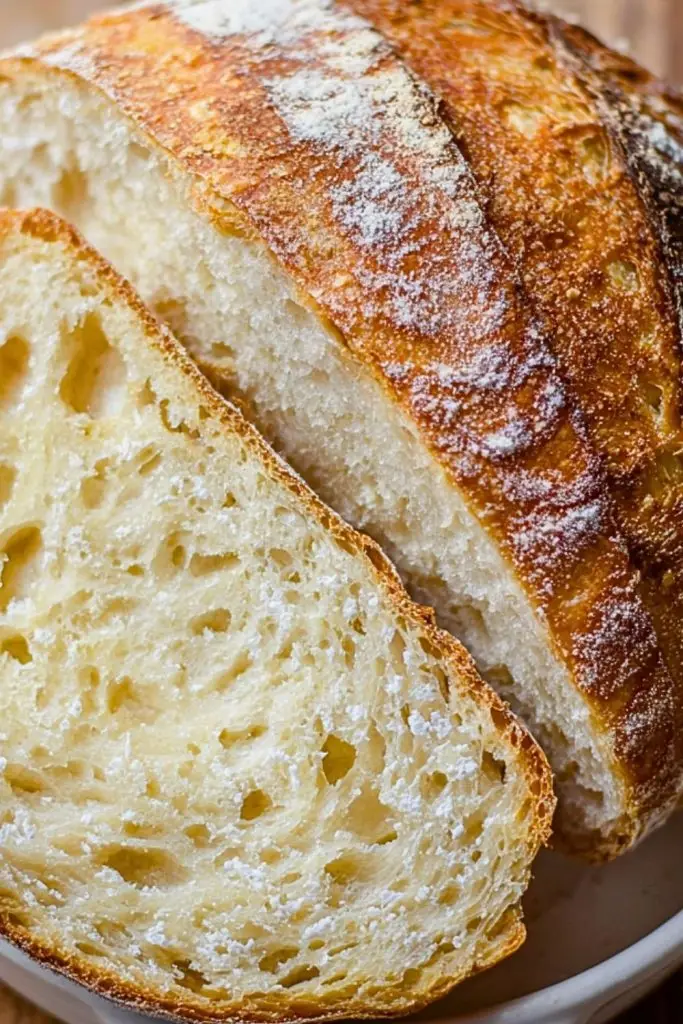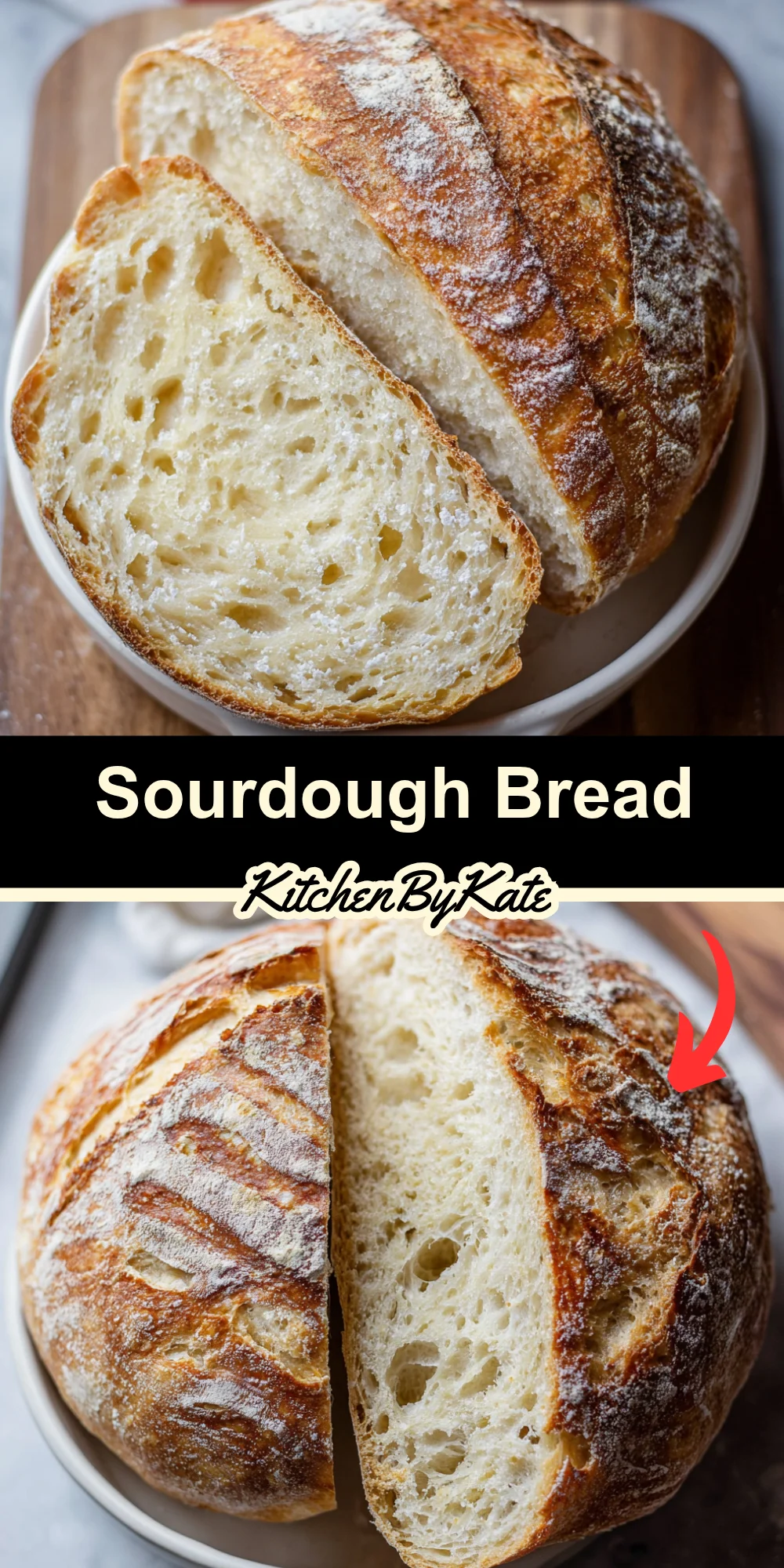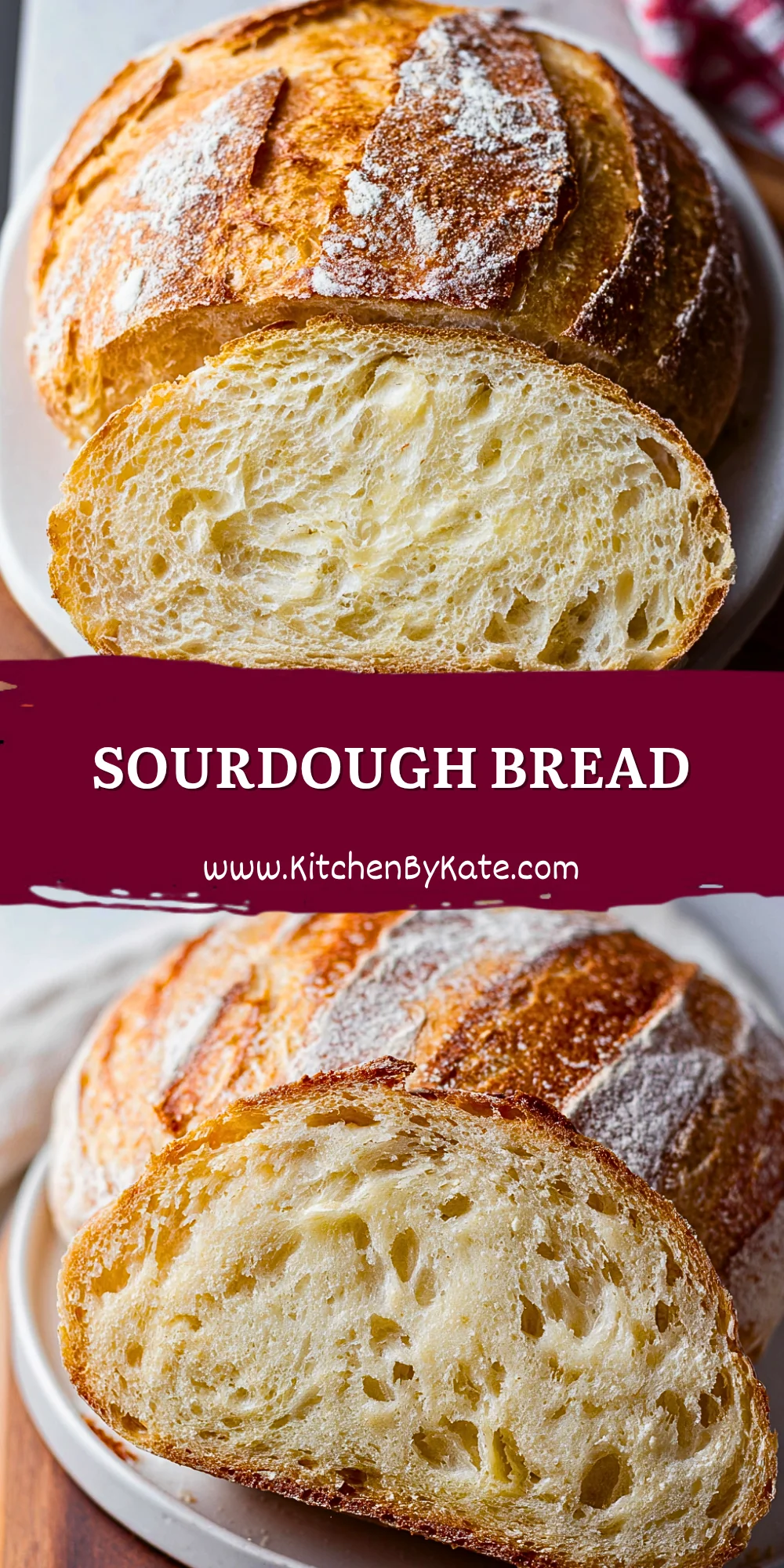Golden, crusty, and irresistibly chewy — sourdough bread is one of the most satisfying bakes you can make at home. With its deeply flavorful tang and airy crumb, this bread is a celebration of patience and tradition. Perfect for breakfast toast, hearty sandwiches, or served simply with a smear of butter, it never fails to impress.

The process of making sourdough is as much about the journey as it is the result. Using just a few simple ingredients, you’ll rely on natural fermentation to bring the dough to life. While it does take time, the reward is a beautifully rustic loaf with a crackling crust and a uniquely tangy interior that’s hard to replicate any other way.
What Kind of Flour Should I Use for Sourdough Bread?
The best sourdough starts with good-quality flour. Bread flour is often preferred for its high protein content, which strengthens gluten development and gives you a better rise. However, you can also blend in whole wheat or rye flour for deeper flavor and character. The key is to avoid low-protein flours like cake or pastry flour, which won’t give the dough enough structure.
Ingredients for the Sourdough Bread
Bread Flour
Provides the strong gluten network needed for a chewy, structured loaf. Stick to high-protein bread flour for the best rise.
Sourdough Starter (Active and Bubbly)
This is the heart of your bread — a natural leavening agent that replaces commercial yeast. Make sure it’s recently fed and vigorous.
Water
Hydrates the flour and activates gluten. Filtered or non-chlorinated water is ideal, as chlorine can inhibit fermentation.
Salt
Strengthens the gluten and adds depth to the bread’s flavor. Don’t skip it — it’s essential for balance.

How To Make the Sourdough Bread
Step 1: Mix the Dough
Combine bread flour, water, and your active sourdough starter in a large mixing bowl. Stir until a shaggy dough forms. Let it rest for 30 minutes to allow the flour to fully hydrate.
Step 2: Add Salt and Stretch
Sprinkle in the salt and mix it into the dough by hand. Begin your stretch and fold routine: reach under the dough, stretch it up, and fold it over. Do this 3–4 times every 30 minutes for the next 2 hours.
Step 3: Bulk Fermentation
Cover the bowl and let the dough ferment at room temperature for 4 to 6 hours. During this time, the dough should rise, become airy, and develop bubbles.
Step 4: Shape the Dough
Turn the dough onto a lightly floured surface. Gently shape it into a round loaf by folding the edges into the center and turning it seam side down. Let it rest for 20 minutes.
Step 5: Final Proof
Transfer the shaped dough into a floured banneton or bowl lined with a towel. Cover and refrigerate overnight or let it rise at room temperature for another 2 to 4 hours until puffed.
Step 6: Bake the Bread
Preheat your oven to 475°F (245°C) with a Dutch oven inside. Score the top of the dough with a sharp blade. Bake covered for 20 minutes, then uncovered for 25 more until deeply golden and crusty.
How to Serve and Store Sourdough Bread
Freshly baked sourdough is best enjoyed the day it’s made, ideally still slightly warm. Slice and serve with butter, olive oil, or your favorite spread. It also makes excellent toast, sandwiches, or a base for bruschetta. For a rustic meal, pair it with soups or cheeses.
To store, keep your loaf at room temperature in a bread bag or wrapped in a clean towel inside a bread box. Avoid sealing it in plastic, which makes the crust soggy. Sourdough stays good for 3–5 days. To revive a stale loaf, sprinkle it with water and warm it in the oven for 5–10 minutes.
Frequently Asked Questions
How do I know my sourdough starter is ready?
Your starter should be bubbly, double in size within 4–6 hours of feeding, and pass the float test (a spoonful floats in water).
Can I use all-purpose flour instead of bread flour?
You can, but the loaf may be less chewy and have a slightly flatter rise due to lower protein content.
Why is my dough so sticky?
Sourdough dough is naturally wetter than standard dough. Lightly wet your hands or use a dough scraper to handle it.
What if I don’t have a Dutch oven?
Use a baking stone or sheet and place a tray of hot water at the bottom of the oven to create steam for a crispy crust.
Can I freeze sourdough bread?
Yes! Slice the bread first, then wrap it in foil and store it in a freezer bag. Reheat slices in a toaster or oven as needed.
Want More Bread Ideas?
If you’re loving this sourdough bread, you’ll want to try these next:
- Easy No-Knead Artisan Bread for a hands-off approach with bakery-quality results.
- Soft Honey Whole Wheat Rolls that are perfect for dinner or sandwiches.
- Garlic Herb Focaccia for an herby, dimpled Italian classic.
- Cinnamon Raisin Swirl Bread to satisfy your sweet breakfast cravings.
- Buttery Brioche Buns ideal for burgers, sliders, or luxurious toast.
Save This Pin For Later
📌 Save this recipe to your Pinterest bread board so you can come back to it any time.
Let me know in the comments how your sourdough turned out! Did you go for an overnight proof or same-day rise? Add any herbs or extra flavors?
I love hearing how each loaf has its own story — feel free to share yours or ask questions below.


Sourdough Bread
- Total Time: 1 hour 30 minutes
- Yield: 1 round loaf
Description
This sourdough bread is crusty on the outside and soft with an airy crumb on the inside, offering that signature tangy flavor that only a natural ferment can provide. Whether you’re a seasoned baker or new to sourdough, this recipe brings a satisfying result to your table.
Ingredients
500g bread flour
100g active sourdough starter
350g water (filtered or non-chlorinated)
10g salt
Instructions
- In a large bowl, mix the bread flour, sourdough starter, and water until a rough dough forms. Let rest for 30 minutes.
- Add the salt and incorporate it by hand. Begin stretch and folds every 30 minutes for 2 hours.
- Cover the dough and let it rise at room temperature for 4 to 6 hours until bubbly and expanded.
- Turn the dough onto a floured surface and shape it into a round. Let rest 20 minutes.
- Place the dough into a floured banneton or towel-lined bowl. Cover and proof in the fridge overnight or 2–4 hours at room temp.
- Preheat oven to 475°F (245°C) with Dutch oven inside. Score the dough and bake 20 minutes covered, then 25 minutes uncovered.
- Prep Time: 45 minutes (plus fermentation/proofing)
- Cook Time: 45 minutes
- Category: Breakfast


